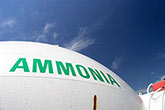Meeting fertilizer demand in Europe
Published by Willow Munz,
Editorial Assistant
World Fertilizer,
In the October issue of World Fertilizer, Gordon Cope, Contributing Editor, discusses how the European fertilizer market has reacted to ongoing developments on the global stage.
Fertilizer is extremely important to Europe, not only as a crop nutrient that greatly enhances food production, but also as a cornerstone to the continent’s economy. Fertilizers Europe estimates that the sector had a market value of US$43.4 billion in 2024.1 Unfortunately, the sector has been facing major challenges for several years, with far-reaching consequences.
Prior to 2021, the EU produced approximately 13 million tpy of nitrogen fertilizers, 2.9 million tpy of potash, and 2.2 million tpy of phosphate products, while consuming 11.2 million tpy of nitrogen, 2.6 million tpy of potash, and 2.6 million tpy of phosphates. The numbers look fairly well balanced on paper, but regional demand and other economic factors, such as transportation costs and blending, result in extensive imports; around 8 million tpy of fertilizers were sourced from Belarus, Russia, and Ukraine.
Potash
After the invasion of Ukraine by Russia in 2022, the EU exempted food and fertilizer from its wartime sanctions, but payment restrictions complicated the movement of fertilizers from Belarus and Russia, both major potash exporters to Europe. Imports from Canada helped stabilise supply shortages, but long-term solutions (especially the development of domestic sources), are needed. The EU has limited expansion potential for mining. Germany accounts for about 87% of EU production and the rest comes from Spain. Economic deposits in Germany are depleting and total ore production now stands at approximately 3.3 million tpy. The closest prospect for new production is the proposed Muga-Vipasca mine in Northern Spain. Highfield Resources estimates capital costs at €735 million; the mine has sufficient reserves to produce 1 million tpy of muriate of potash (MOP) for 30 years. Opponents to the project cite water concerns in the arid climate. Preliminary earthmoving is underway, but no production date has been set.
In the UK, Anglo American’s 13 million tpy Woodsmith polyhalite project in the Yorkshire region faces further delays. The underground mine involves digging 1.6 km deep mine shafts and a 37 km tunnel to transport raw material to the port of Teesside. The rock will then be milled into sulfate of potash-magnesia (SOPM) for export around the world. In May, 2024, Australian mining giant BHP offered £38.6 billion for the firm. During protracted negotiations, Anglo American reduced capital expenditures on the project and put much of the existing infrastructure into maintenance mode. The offer was eventually rejected by the board, but the slowdown has pushed the ultimate production date beyond 2027.
Phosphate
The EU has one active phosphorous mine producing approximately 900 000 tpy of phosphate ore, satisfying an estimated 10% of fertilizer demand. In 2024, Europe imported almost €4 billion in phosphorous fertilizer; approximately 35% came from Morocco. The North African country, which holds the world’s largest phosphate reserves, has recently increased capacity at its Jorf Lasfar Chemical Complex by 1 million tpy of granular phosphate, with further phases planned. Thanks to increased exports to Europe and Asia, phosphate miner OCP’s net profits for 2024 grew to US$9.76 billion, up from US$9 billion the year prior.
Over-reliance on imports creates risk, however, in addition to the cost, international sources leave European farmers vulnerable to price volatility, supply disruptions, and geopolitical upheaval.
Recycling phosphate holds significant potential. The European Sustainable Phosphorous Platform (ESPP) is a broad-based coalition dedicated to recovering phosphorous compounds. The EU generates over 800 000 tpy of phosphorous in sewage, animal by-products, and food scraps. When sewage sludge is incinerated, the fly ash contains up to 11% phosphorous compounds. Since 2019, fertilizer producer ICL has been recycling phosphates from municipal waste streams at its Amfert fertilizer plant in the Dutch Province of Noord-Holland. The recycled mineral displaces approximately 10% of the mined phosphate feedstock at ICL’s fertilizer plant; the company has the goal of eventually reaching 100% recycled phosphate.
Exploration for phosphate in the EU has resulted in a game-changing discovery. In July, 2023, Norge Mining announced that it had delineated 70 billion t of high-quality phosphate igneous rock in Southern Norway, sufficient to meet global demand for fertilizer, EV batteries, and renewable power storage for decades to come. ABB, an international engineering firm, is conducting a front-end engineering and design (FEED) study; the goal is to build a completely-electrified mine, with a tentative start up date of 2028.
To read the full article subscribe here to receive a free copy of World Fertilizer.
Read the article online at: https://www.worldfertilizer.com/special-reports/09102025/meeting-fertilizer-demand-in-europe/
You might also like
OCI sells OCI Ammonia Holding to AGROFERT
OCI Global has announced the sale of OCI Ammonia Holding to AGROFERT.

